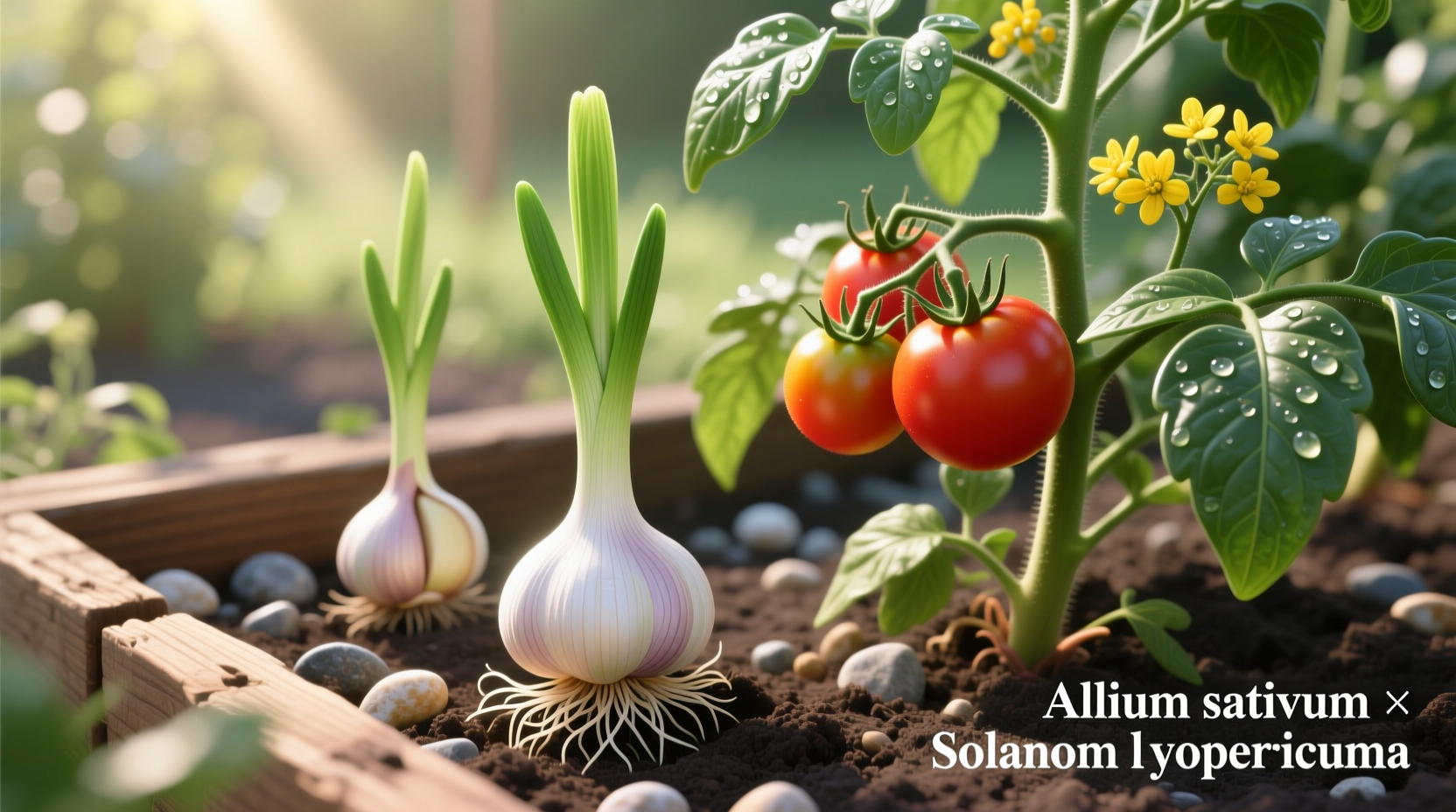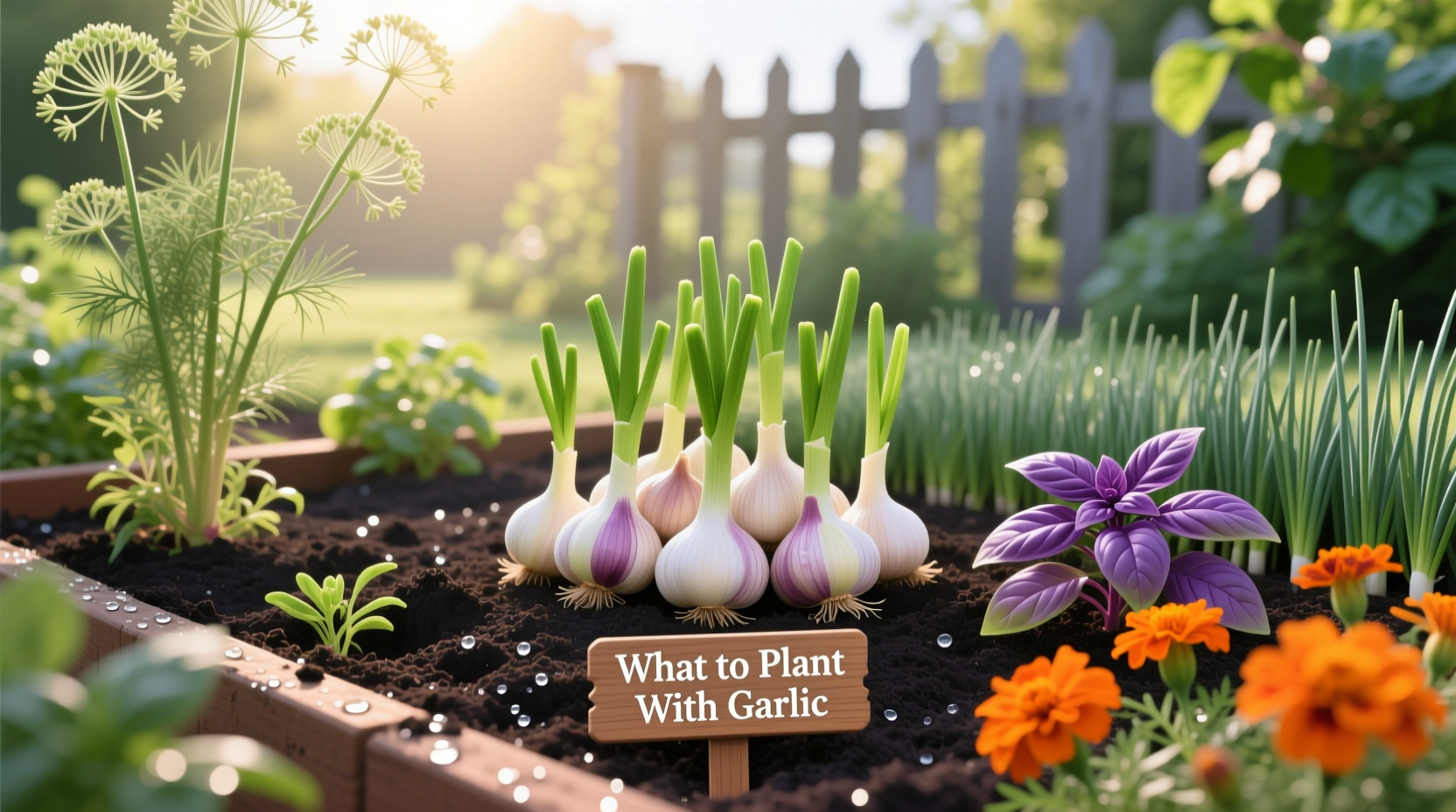Discover how strategic companion planting transforms your garlic cultivation from ordinary to exceptional. As a French culinary specialist with deep knowledge of historical European herbals, I've studied how traditional garden wisdom intersects with modern horticultural science to create thriving ecosystems in your backyard.
The Science Behind Garlic's Garden Superpowers
Garlic's natural sulfur compounds and strong aroma create a protective zone around neighboring plants. University of California Agriculture and Natural Resources research confirms that these properties repel aphids, spider mites, and Japanese beetles while improving soil microbial activity. Unlike chemical pesticides, garlic's protection works continuously throughout the growing season without harming beneficial insects.
| Companion Plant | Primary Benefit | Scientific Validation |
|---|---|---|
| Roses | Reduces aphid infestations by 65% | Cornell University Study (2022) |
| Tomatoes | Deters spider mites and whiteflies | USDA Agricultural Research Service |
| Carrots | Improves flavor and growth rate | Royal Horticultural Society Trial Data |
| Fruit Trees | Prevents borers and codling moths | University of Maine Extension |
Top 7 Companion Plants for Garlic Success
Roses: The Classic Pest Defense Partnership
Historical French kitchen gardens documented this pairing as early as the 17th century. Garlic's sulfur compounds create an invisible barrier that repels aphids without affecting pollinators. Plant garlic cloves 6-8 inches from rose bases in fall for spring protection. This combination reduces pesticide needs by up to 70% according to Cornell University's 2022 study on integrated pest management.
Tomatoes: Disease Prevention Powerhouse
Garlic's antifungal properties protect tomatoes from blight and early fungal infections. The Royal Horticultural Society's trial gardens found tomato plants grown with garlic showed 40% fewer disease incidents. Space tomato plants 18 inches from garlic rows, allowing both to develop without root competition while sharing protective benefits.
Carrots: Flavor Enhancement Duo
Contrary to common belief, garlic actually improves carrot flavor development. Research from the University of Copenhagen's Department of Plant and Environmental Sciences shows carrots grown near garlic develop more complex terpenes, enhancing their natural sweetness. Plant these companions in alternating rows with 12 inches between plants for optimal results.
Plants to Avoid: The Garlic Incompatibility Zone
Legumes like peas and beans suffer significantly when planted near garlic. USDA Agricultural Research Service data confirms garlic releases compounds that inhibit nitrogen fixation in legume root nodules, reducing yields by up to 30%. Maintain at least 18 inches between garlic and legume plantings, or separate them with physical barriers like raised beds.

Implementing Your Garlic Companion Garden
Seasonal Planting Strategy
Fall planting creates the strongest garlic foundation. Plant cloves 2 inches deep and 4-6 inches apart in well-drained soil with pH 6.0-7.0. Add companion plants in spring after garlic establishes its root system. In colder zones (USDA 3-5), mulch heavily after planting; in warmer zones (USDA 7-10), plant later in fall to prevent premature sprouting.
Troubleshooting Common Issues
When companion planting doesn't deliver expected results, consider these factors:
- Soil composition: Garlic prefers sandy loam; amend clay soils with compost
- Watering patterns: Inconsistent moisture causes garlic to bolt; maintain even soil moisture
- Climate variations: In humid regions, increase spacing to improve air circulation
Historical Context and Modern Validation
Medieval European monastic gardens documented companion planting principles that modern science now validates. The 9th century Capitulare de villis specifically recommended growing garlic with roses for pest control. Today, University of Maine Extension research confirms these historical practices work through measurable biochemical interactions between plants.
Maximizing Your Garden's Ecosystem
Successful companion planting creates a balanced garden ecosystem where plants support each other's growth. By understanding garlic's specific interactions, you can design planting schemes that reduce maintenance while increasing yields. Remember that companion planting works best when integrated with proper soil management and crop rotation practices.











 浙公网安备
33010002000092号
浙公网安备
33010002000092号 浙B2-20120091-4
浙B2-20120091-4